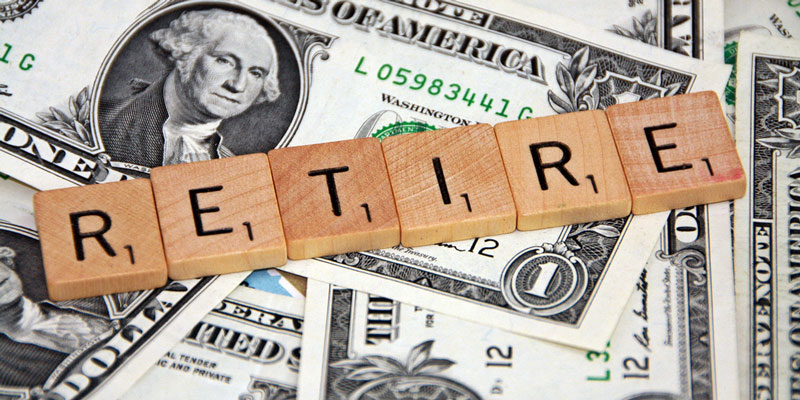Birmingham, Alabama-based financial guru Jeff Roberts, who was recently named one of the top private wealth advisors in the nation by Barron’s®, came on Yellowhammer Radio to lay out the facts so people can decide for themselves.
The full conversation with Mr. Roberts can be heard on the Yellowhammer Radio podcast or in the video above, and a lightly edited transcript of his interview with Yellowhammer’s Andrea Tice and Scott Chambers can be read below.
Subscribe to the Yellowhammer Radio Podcast on iTunes. Learn more about Jeff Roberts’ private wealth advisory practice at JeffRobertsAndAssociates.com.
Scott Chambers:
Well what’s on your mind today Jeff Roberts?
Jeff Roberts:
Well you know i often times speak about issues or topics and I’m commonly discussing with clients that come in the office and sometimes it may be one particular client made me think of something. I’m having a lot of people asking questions now about the stock market which is really achieving high levels in the last few weeks, months. Really since the election and we saw a lot of volatility last year in 2016 crazy volatility which will touch on. And so people are often asking you know what do i need to be doing if markets are going to be at highs or if markets gonna be crazy volatile like we saw last year and unique investment ideas. So as crazy as it sounds this is a very simple simple investment technique we’re going to talk about today and i’m going to drill down on today. It’s basic but it makes sense and simple averaging. Dollar cost averaging, it’s by definition dollar-cost averaging is an investment technique of buying a fixed dollar amount of a particular investment on a regular basis. Now regardless of the share price, the investor purchases more shares when the prices are low and fewer shares and prices are high. And the premise of dollar-cost averaging is it lowers the average share cost over time and increasing an opportunity for profit. The dollar cost average technique it does not guarantee that an investor won’t lose money on investments. There’s nothing that can do that when it comes to the equity markets rather it is meant to allow an investment over time instead of a lump sum investment strategy. So that’s just the basic concept and I thought we might walk through an example and talk about how it can apply when it works when it doesn’t, today if that sounds good to you guys?
Scott Chambers:
Please do, let’s hear it.
Andrea Tice:
I’m interested. look
Jeff Roberts:
Okay, so now here’s where I get a little analytic and over the radio it’s difficult. When I teach classes and things this is a lot easier using a dry erase board but for the listening audience i want you to picture in your head write on the piece of paper you are going to three months and I’m going to makeup just hypothetical dollar-cost average situation and all these numbers I’m using a completely made up. These aren’t promises of return or something but let’s assume we’re going to do one hundred dollars and we’re going to invest at one month two months and then a third month and makeup the day and say like on the first. So if today is our first day of investing hundred dollars and let’s assume that the prices of the investment market we’re buying in we’re going to be buying some sort of stock market or index and the price in the market is fifty dollars a share. So if we put in a hundred and the prices are fifty dollars a share, here’s the math question how many shares did you buy?
Andrea Tice:
Oh I can answer this one I’m pretty sure. Two shares.
Jeff Roberts:
Two shares you’re spot on. There’s mathematician. So if we think about January in theory we bought two shares and let’s assume you know if you’re like one of those people that invest and always feel that we invest markets going the wrong direction and sure enough you put your hundred dollars in and then just like you expected the very next day you’re reading the paper and the stock market drops. And it goes down, let’s just make up something and say it drops fifty percent. so prices in the market go from fifty dollars a share to $25 a share so you’re literally seeing fifty percent drop in the market. First of all, how are you feeling if you’re investing and seeing portfolio fall fifty percent in value.
Scott Chambers:
I’m a little woozy right now, Jeff.
Jeff Roberts:
You’re getting upset so we jokingly say at the time that you’re frustrated the most at a financial guy or somebody that’s recommending a portfolio, when things look the worst don’t throw a brick through their window but if you do, attach a check and or some cash because that’s the time that you need to be putting money in. So your existing one hundred dollars that we put in January has fallen from a hundred dollars down to fifty dollars because you have two shares now priced at $25 here but this month we’re going to put in a hundred bucks, in February we put in a hundred dollars prices are at $25 share how many shares do we buy? I should have given Scott a chance so it has a victory. Yeah, four shares and then and so the next month just as we know overtime markets always historically have picked up and continue to rise over the decades which is a wonderful wonderful truth. So let’s assume that the markets rebounded and went back from the bottom of $25 a share back up to the fifty dollars a share so in month three we put in a hundred dollars and we buy now two shares at fifty bucks each. So if you think about we put in three hundred dollars total and we had two shares in the first month, four shares in the second month, two shares in the third month. That’s a total of eight shares. Well, think about it, it’s eight shares priced at fifty dollars each now and so that’s four hundred dollars total. You put in three hundred and your investment is worth four hundred in this particular hypothetical scenario. And the market never appreciated in value, meaning it never went up beyond fifty dollars where you started it just went down and came back. So the idea is in this particular example that you made money by the market going down, but of course what you did was you maintain your investment strategy of systematically investing. Now, think about it if the opposite were true and when the market went down and fell fifty percent and you didn’t put in the hundred dollars that month and you skipped it and then you waited until March and you put in your hundred dollars on the market rebounded. Well you had no chance to make money. So this is the crazy statement, you actually when your dollar cost averaging you can actually make more money when the market goes down. And so it kind of sounds contrarian but yeah you want the market to go down to gobble up as many shares that you can in low prices because you want to have the most shares in your portfolio and yes over time we need the portfolio to increase in shares to go up in value no doubt. But when you’re accumulating it’s good when prices go down as long as you’re adding to the mix. That’s the basics on dollar cost averaging.
Scott Chambers:
Sounds pretty cool to me.
Andrea Tice:
Yeah, it seems like slow and steady and strategic wins the day over time.
Jeff Roberts:
It does now let’s give some application in like for example last year in January and February specifically if you look at those two months and you look at just the stock market itself like the DOW Jones or the S&P 500 the market was down around roughly around eleven percent in the first two months of last year. So if you invested hundred thousand dollars January one it was down below ninety thousand dollars if you put it in the US stock market by the end of February. That’s frustrating. If you are systematically adding to the portfolio or had broken up the hundred thousand dollars instead of at one time you eased it into the market over a period of time then you could stand to benefit from that. Now, what we know that we tell clients of course is no timing markets and sometimes it makes sense to go lump some monies into the market as opposed to dollar cost averaging. A lot of this has to do with clients individual risk tolerances and if you’re trying to avoid dips and swings in their portfolio sometimes dollar-cost averaging makes more sense and sometimes lump sum investing can. It does depend it’s not a one-size-fits-all thing right but last year when had crazy months of volatility like what we saw big swings dollar-cost averaging can work very well. And sometimes when clients are seeing markets at an all-time high kinda like now. And those people that have a lump sum of money that they’d like to enter into the market but they’re afraid of buying in high. Spreading that lump sum out over time might be a more conservative approach to entering a market but again depends on the risk profile.
Andrea Tice:
Sure yeah.
Jeff Roberts:
An example that quickly is like a 401k plan if you think about it most people fail to connect the dots and they realize that your 401k plan works so well because essentially dollar-cost averaging two people have a 401k, 403b and employers plan you’re putting money systematically out of every paycheck which is that dollar cost average strategy and it works so well there but they’re not employing that in any other parts of their financial wealth. Which is why we tell people you need to have a savings goal because most people just spend their money was left over they try and save but that doesn’t happen. You should save have a goal to save a certain amount first and then spend everything else. Because otherwise it’s everything’s going to get wound up in the spending stream. That dollar cost averaging good strategy.
Scott Chambers:
Well just that people want to talk to you about dollar-cost averaging tell them how to do so.
Jeff Roberts:
Love to hear from them at JeffRobertsandAssociates.com or give us a buzz at 313-9150 and would be happy to help define and workforce people’s goals.
Scott Chambers:
Very cool. Jeff, as always it’s great talking to you getting some insight on how we should be you looking at finances and investing. So give Jeff a call he and his team Jeff Roberts & Associates. We look forward to talking to you again next Wednesday, Jeff.












